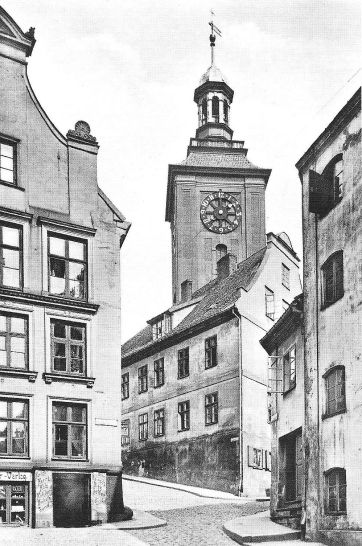The One Who Dies First of the Plague Devours the Others

|
| Geographic Coordinates: 54° 42' 35.36" N, 20° 31' 3.25" E |
(See Hennenberger p. 224)
In the year 1564, there was a great dying in the land, and a lot of people passed away in two villages belonging to the Löbenicht district of Königsberg. At this time, three farmers came to the priest Hennenberger who administered this area, and asked for a burial at a site determined by them. He agreed to the burial, but he dismissed their request for a specific site. For the school teacher had complained to him that they were burying so many dead people in front of his back door so that he was unable to get to the church yard to ring the bells — even though they had enough space elsewhere.
Then they told the priest the reason for this request. For it had been reported to them that the first person who had died in a village, during a time of the plague would sit up in their grave. They would consume their funeral cloth, and as long as they were able to continue eating it, the dying would not cease in the village. This had occurred at certain named villages and they had found the indicated people sitting up in their graves and feasting. Then the locals had cut off the dead person’s head with a spade, and then the dying had ended.
But Hennenberger told them that the plague was a punishment by God for their sins, and admonished them to bury their dead people at another spot of the church yard. And the Lord God made that this was the last person in the village, who died of this illness.
In another village, the first person who died had been buried on a field, for he had never visited God’s table. A large group of people had secretly dug him up, and they had found him sitting and eating the funeral cloth. They then cut his neck off so that his blood sprayed over the diggers, but — since they had been fooled by the Devil himself — they could see no other approach than this.
But they suffered for this, for everywhere they found sick people in their houses, and many more people died than before. For in this hamlet there were only six farmers and numerous gardeners, and yet 49 people died of this — not counting the one whom they had buried on the field. A magister named Georg Roverius had written a similar historical anecdote to Dr. Martin Luther at Wittenberg: A woman had died in his village„ and then, after she had died, she sat up in her grave and for this reason all people in the village had died as well.
Source: Grässe - Sagenbuch des preussischen Staats - Zweiter Band, p. 604f